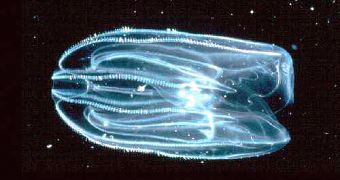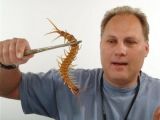This new finding has come like a shock: the world's most primitive multicellular animals still living are not the sponges, but a more complex animal. The research carried out at the National Science Foundation (NSF) and published in the journal "Nature" revealed that the comb jellyfish, which has tissues and a nervous system, diverged from other animals before the tissue-less and nerveless sponge, regarded so far as the earliest diverging animals. "This was a complete shocker. So shocking that we initially thought something had gone very wrong. The presence of the relatively complex comb jelly at the base of the tree of life suggests that the first animal was probably more complex than previously believed," said co-author Casey Dunn of NSF.
"The comb jelly could only have achieved its apparent seniority over the simpler sponge via one of two new evolutionary scenarios: 1) the comb jelly evolved its complexity independently of other animals, after it branched off onto its own evolutionary path; or 2) the sponge evolved its simple form from more complex creatures - a possibility that underscores the fact that evolution is not necessarily just a march towards increased complexity," added Dunn.
But the age of this split is hard to tell. "Unfortunately, we don't have fossils of the oldest comb jelly. Therefore, there is no way to date the earliest jelly and determine when it diverged." said Dunn.
This research also shows that what we call jellyfishes represent in fact various evolutionary lineages.
"After diverging from other species, the comb jelly probably continued to evolve. Therefore, today's comb jelly - a common creature - probably looks very different that did the earliest comb jelly. Moreover, the tentacled, squishy but bell-less comb jelly developed along a different evolutionary path than did the classically bell-shaped jellyfish. Such divergences mean that the jellyfish type of body form has independently evolved several times," said Patrick Herendeen, an NSF program director.
The analysis also explained other biological issues. For example, the team found that millipedes and centipedes are more closely related to spiders than to insects. But to make a complete evolutionary tree of life will take time.
"Scientists currently estimate that there are a total of about 10 million species of organisms on earth. But so far, only about 1.8 million species - most of which are animals - have been described by science. Very few of these species have, so far, been positioned in the tree of life," said Dunn.
The task is eased by the high-powered analytic technique used by the team, employing over 100 computers, able to process much more data than any previous similar research.
"Even as it is getting easier and cheaper to analyze the DNA of organisms with increasingly powerful computers, it is getting more expensive and difficult to find, collect, and identify organisms," added Dunn.

 14 DAY TRIAL //
14 DAY TRIAL // 
